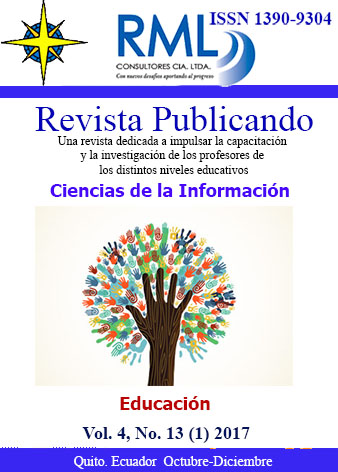Resumen
The article deals with the problem of punning word formation in the German language. In connection with the topicality of philological studies on reflection of national specifics in the language, as well as the comparative study of different national languages and their features, the interest in unique linguistic phenomena has been growing. For example, the frequency of composition as a word-forming method in European languages or the structural and semantic features of punning word formation are of interest. The relevance of the article is determined by the active use of puns in modern German, based on the model of complex words. The article aims to study punning complex words as one of the types of language game, as well as to consider word-formation patterns, on the basis of which puns are formed, and their translations into Russian. The main methods of research are the method of continuous sampling, the descriptive and comparative method, as well as the analysis of directly constituent components. For the completeness of the presentation of the features of a given linguistic phenomenon, the article covers the notions of composing, pun, word-formation model. The study identifies the most frequent and widespread models of punning formations and analyzes their translation equivalents in the Russian language. The punning compound words from the point of view of the structure correspond to the word-formation models characteristic of the German language, their specific feature is the semantic transformation that is based on the meaning change of one of the components of pun and influences the translation of the word.
Referencias
Efremova Т.F.,2006, “Modern Explanatory Dictionary of the Russian Language”, in 3 volumes., Ðœ.:ÐSТ, P. 1088.
Elke Donalies,2002, “Die Wortbildung des Deutschen: Ein íœberblick”, Narr-Verlag, Tí¼bingen, p. 192.
Elisabeth O. Selkirk, 1982,“The syntax of words”, 2. Auflage, MIT Press, Cambridge, Mass, p. 136.
Jí¼rgen Eichhoff, Wilfried Seibicke, Michael Wolffsohn, 2001,“Gesellschaft fí¼r deutsche Sprache (Hrsg.): Name und Gesellschaft. Soziale und historische Aspekte der Namengebung und Namenentwicklung”, Dudenverlag, p. 236.
Milovskaya Ðœ.D., 2011,“German Language Everyday Joke as a Specific Type of Humoristic Discourse”, Ivanovo, P. 40.
Pavlov V.Ðœ.,1985, “The Notion of Lexeme and The Problem of Syntax-Word Formation Relations”, Editor-in-Chief V.G. Admoni, L.: Science, Leningrad Department, P. 299.
Pollack. J.,2011, “The Pun Also Rises”, New York: Gotham Books, p. 204.
Stepanova Ðœ.D., 1953,“German Word Formation”, Moscow, P. 376.
Wamelink G.P.J. - Lint van, 1994,“Semantics and Pragmatics. In R.E. Asher (ed), The Encyclopedia of Language and Linguistics”, Oxford: Pergamon, pp. 657-659.
Usted es libre de:
Compartir — copiar y redistribuir el material en cualquier medio o formato
Adaptar — remezclar, transformar y construir a partir del material
La licenciante no puede revocar estas libertades en tanto usted siga los términos de la licencia
Bajo los siguientes términos:
Atribución — Usted debe dar crédito de manera adecuada, brindar un enlace a la licencia, e indicar si se han realizado cambios. Puede hacerlo en cualquier forma razonable, pero no de forma tal que sugiera que usted o su uso tienen el apoyo de la licenciante.
NoComercial — Usted no puede hacer uso del material con propósitos comerciales.
CompartirIgual — Si remezcla, transforma o crea a partir del material, debe distribuir su contribución bajo la lamisma licencia del original.
